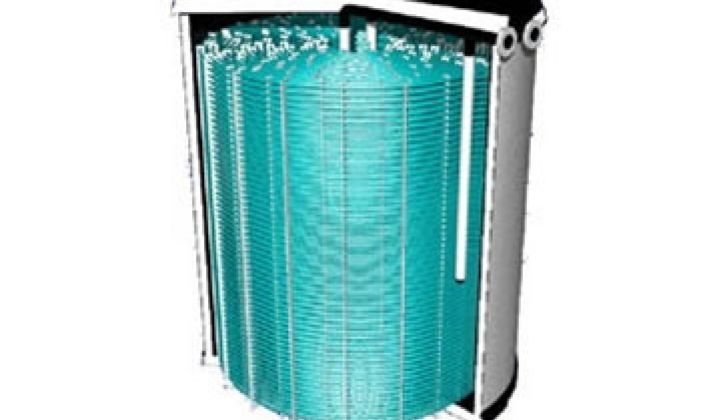Ice cooling is probably the only green technology from the movies.
Back in the 1920s and 1930s, movie theaters made large amounts of ice at night to cool theaters, explained Mark MacCracken, CEO of Calmac Manufacturing, which specializes in thermal mass cooling. Power was relatively inexpensive, but air conditioning wasn't as nuanced as it is today.
Ice made a comeback in the 1980s but died after utilities eliminated rebates for installing icemakers.
High power prices, along with a push toward LEED-certified buildings, are putting it back on the map. Calmac has installed ice systems in 3,500 buildings, including several high-profile projects. The Bank of America Tower in New York installed Calmac's ice-powered coolers. In Hawaii, a 210,000 square foot Nordstrom's will be cooled by 43 tons of ice produced a night. Tata Consultancy Services, the technology branch of the Indian conglomerate, is putting the company's system in its new research facility in Bangalore. Depending on the number of tanks installed, hundreds of tons of ice can be produced at a location in a day
Demand is largely being driven by peak power prices and the effect air conditioning has on midday power consumption (see Buildings Without Air Conditioners: The Latest in Energy Efficiency). Electricity is far cheaper at night than the daytime. By making ice at night, the power required for air conditioning is essentially moved to nighttime. Boring as it might sound, air conditioning is now a big deal. Established companies like Calmac, which is a few decades old, are reaping the benefits along with startups like Optimum Energy, which makes software for managing chiller systems.
"Peak is 30 percent of the electrical draw on a hot summer day and it is all cooling," MacCracken said. "We have shifted gigawatts of power."
The melting ice does not cool buildings directly. Instead, think of this as temperature arbitrage. To chill the air, most air conditioning systems require large amounts of water (or a water solution) chilled to 44 degrees. Keeping water at that temperature ends up requiring inordinate amounts of electricity because it gets to those temperatures by passing through industrial chillers (see Better Cold Water Through Software).
With an ice system, industrial chillers at night reduce the temperature of a solution made up of water and glycol to 25 degrees. This solution then snakes its way through three miles of plastic tubing coiled in a large vat of water. The low temperature causes the ice to 95 percent of the water in the 400-plus gallon tank to freeze.
When morning comes around, the chiller only reduces the temperature of the glycol/water solution to 52 degrees. But, as it passes through the ice, it drops to 44 degrees. Super-cooling the solution at night and running the chiller on light duty in the day ends up leading to lower power bills.



